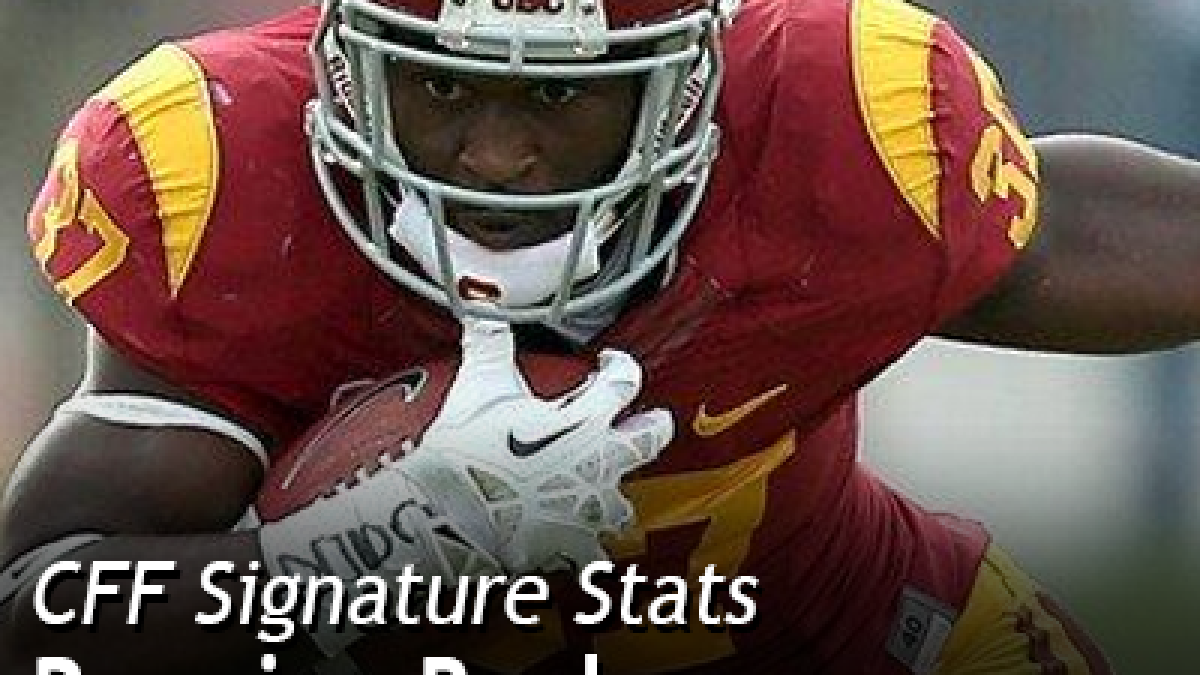 As we wade into our massive pool of College Football Focus data, we’ll be sharing with you some of the highlights from our Signature Stats in position-by-position looks. So, over the next couple weeks you can expect daily dives into the best and worst that the full FBS schedule produced in all of the same categories you’ve come to know from our NFL coverage. It’s important to note that our stats are different from our grades, as the stats are black and white, result-based numbers while the grades add the context to a player’s contribution in each situation.
As we wade into our massive pool of College Football Focus data, we’ll be sharing with you some of the highlights from our Signature Stats in position-by-position looks. So, over the next couple weeks you can expect daily dives into the best and worst that the full FBS schedule produced in all of the same categories you’ve come to know from our NFL coverage. It’s important to note that our stats are different from our grades, as the stats are black and white, result-based numbers while the grades add the context to a player’s contribution in each situation.
As the NFL continues to grow as a pass-first league, running backs’ receiving and pass protection abilities have become even more important to coaches and front office personnel. Here is a look at some of our passing game signature stats for running backs with the 2014 leader listed for perspective.
Yards Per Route Run
2014 NFL Leader: Theo Riddick 2.45
Yards Per Route Run is exactly what it says it is. It takes into account the number of snaps a player runs a route, which can provide a better idea of a player’s production and effectiveness based on opportunities. That said, there are also many players who do not have much asked from them as receivers, including even some of the best rushers in the nation.
– Javorius Allen and Duke Johnson are two of the most dynamic running backs in the draft class, and proved to be some of the most effective receivers out of the backfield. Johnson was particularly effective on seams, wheels, and Texas routes out of the backfield.
– Jay Ajayi ran more routes than any other back in the draft class, but still was able to crack the Top 5 in YPRR after leading the draft class in receiving yards.
– Damon Bullock played just 260 snaps this season, but he ran routes on nearly two-thirds of them and hauled in 40 catches.
Pass Blocking Efficiency
Top 10
2014 NFL Leaders: Jaquizz Rodgers & Steven Jackson 99.0
Being able to pick up pass rushers is an invaluable skill as a running back. It is not uncommon for rookie players have their playing time or role limited because they are a liability when it comes to pass protection. When evaluating pass protection, total pressure numbers do not provide much context without knowing the number of times a player was asked to block. Our Pass Blocking Efficiency metric takes this into account to give a better picture of a player’s performance and allow them to be compared more easily.
– Seven players allowed just one pressure all season, led by Aaron Wimberly who stayed in to block 141 times. Wimberly is a great example that small stature (5-foot-9, 179 pounds) does not prevent a running back from being good in pass protection.
– Overall, the Top 10 doesn’t feature any of the players being mentioned as potential early-round picks.
Bottom 10
– David Cobb is a strong and physical runner, but those traits haven’t translated as well into pass protection yet. His 11 total pressures allowed were more than any other running back in FBS.
– Ameer Abdullah and Javorius Allen, along with Cobb, are a few players with good draft prospects whose draft stock might take a hit due to their poor performance and potential limitations in pass protection.
– One interesting note is how player utilization ranges when it comes to the college passing game for running backs. Some players like Joey Iosefa stay in to block nearly two-thirds of the time, while others like Josh Robinson release out on routes four or five times as often as they block.
Follow Matt on Twitter: @PFF_Matt





 © 2024 PFF - all rights reserved.
© 2024 PFF - all rights reserved.